There’s nothing quite like India’s Holi Festival.
Anywhere else in the world, a pink-paint-splattered cow wandering through the streets might seem a bit strange. But in India, nobody bats an eyelid.
That’s because Holi Festival – the three-day colour extravaganza – leaves its mark on everything. And those marks last long after the festival is over.
What exactly is the Festival of Colours, and why is it celebrated?
India is already a ridiculously colorful country.
During the five months I travelled through India, I was constantly confronted with scenes which seemed to have sprung straight from a technicolour postcard: long saris stretched out to dry down the huge central staircase in Omkareshwar; piles of fresh green watermelons against bright yellow walls in the south; entire cities in Rajasthan filled with blue painted buildings.
So it stands to reason that India is also the place to host the world’s biggest colour festival.
Holi takes place on the full moon of the spring equinox, symbolically marking the triumph of good over evil. The date changes every year – in 2019, Holi starts on March 20th and ends on March 21st, which means most parties take place on the morning of March 21st.
Because Holi is absolutely about the parties.
Preparing for Holi Festival
The first indication that Holi celebrations are imminent are seeing these trays of coloured powder appearing on street stalls throughout the country. Each part of India celebrates Holi in their own way, but Holi preparation remains fundamentally the same:
– Buy your own coloured powder. This is the hallmark of Holi’s festivities, and you’ll want a good haul of different colours to really perfect those colourful rainbows you’ll be throwing at people all day.
– Wear white clothes – or clothes you don’t mind ruining! This goes for every piece of clothing, including underwear, as literally the colour gets literally everywhere.
– Wear flipflops. There’s no way to avoid getting wet, and flipflops will be the easiest shoes to wash afterward.
– Cover your body in oil (coconut & almond are both good). That means your hair and face as well as your body – it makes removing the powder a lot easier.
– Cover your hair in a scarf or a wrap. For blondes especially, the Holi powder can stain your hair for weeks or even months after the celebrations end. If you’re happy to be sporting the ‘Holi look’ then go for it; otherwise, cover up!
– Watch out for pickpockets and leave your valuables at home. Like any major street party occasion, thieves and pickpockets are rife at Holi. Don’t give them the opportunity to steal from you while you’re having fun.
– Wrap your camera and/or phone in plastic. If you still want to carry electronics with you, be aware that Holi’s powdered paint is not only colourful but impossible to extricate from the nooks and crannies of machinery. Make everything waterproof and airtight.
Celebrating Holi in Orchha, India
As the day of Holi approached, I was nine hours away from Delhi in a tiny town called Orchha.
The idea of celebrating Holi in rural India was a fascinating one, and my friends and I jumped straight into action: heading for the local markets to buy clothes specifically for the occasion, and grabbing little bags of powder from stalls set up outside the Orchha fortress.
When the day of Holi officially dawned, we gathered on the balcony of our hotel and promptly began throwing powder at each other. It felt a little ridiculous because we all knew each other already – but our extremely enthusiastic guide got us into the swing of things.
As the day progressed, we rode down the highway in a rickshaw, battling with a couple of guys in the neighbouring rickshaw who gleefully threw powder our way after firing on us with a water pistol for maximum colour soaking effect.
We arrived at the house of our guide’s friend, and gamely fought with a screaming gathering of his children and their friends – the entire outdoor courtyard duly became obliterated with patches of fluorescent powder.
But for me, the most memorable part of Holi came afterwards.
What does India look like once Holi is over?
After watching the little town of Orchha explode into colour the previous day, we decided to wander through the streets and investigate.
The unmistakeable evidence was everywhere: in the firm handprints and the long streaks and smears on building walls and telegraph poles. I could only imagine the gangs of children wiping their way along the surface of every white house!
The colour had infiltrated people’s clothes and bodies. Little children’s footprints left red and orange smudges where they stepped, and a rickshaw driver’s dusty purple hair contrasted with the pink streaks on his shirt.
Even the animals carried colourful reminders of Holi: the pink cows, the blue goats, the green dogs.
If I’d got my nose to the ground, I’d probably have seen insects carrying specks of coloured powder on their shells, carrying it back to their nests.
Of course, some of the Orchha buildings are so colourful that you can’t tell whether they’ve received any attention from Holi or not!
Even the surface of the streets themselves were stained with patches of red and green.
And as our journey took us away from Orchha and on towards Delhi in the days afterwards, I continued to see the asphalt stained like this – almost as if the country was hesitant to let go of such a colourful celebration.
The freedom you feel when celebrating Holi Festival
Getting covered with coloured powder may not sound like much, but there’s an unexpected joy to be had during Holi festivities.
People celebrating Holi around the world are all marking the same thing: happiness, love, and acceptance of one another. On the surface, Holi may look like it’s imitating a battle – but it’s all for fun. And there aren’t many occasions in regular life when you get to cover yourself in all the colours of the rainbow.
People and animals alike.

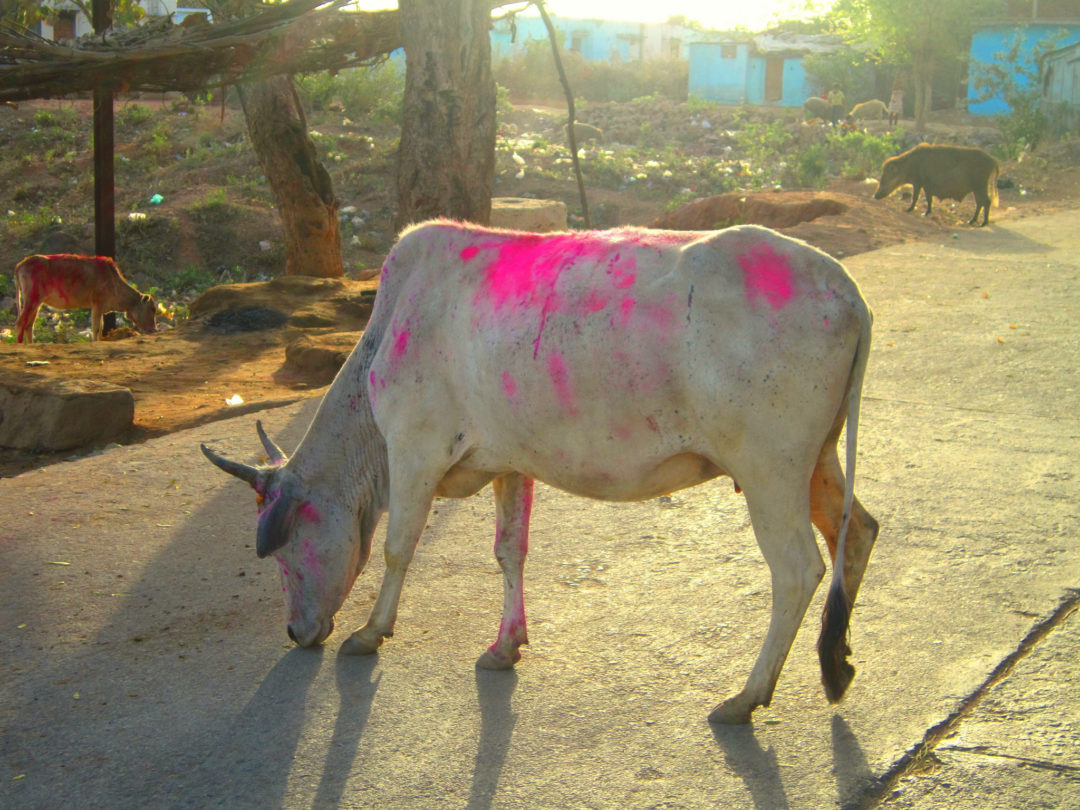

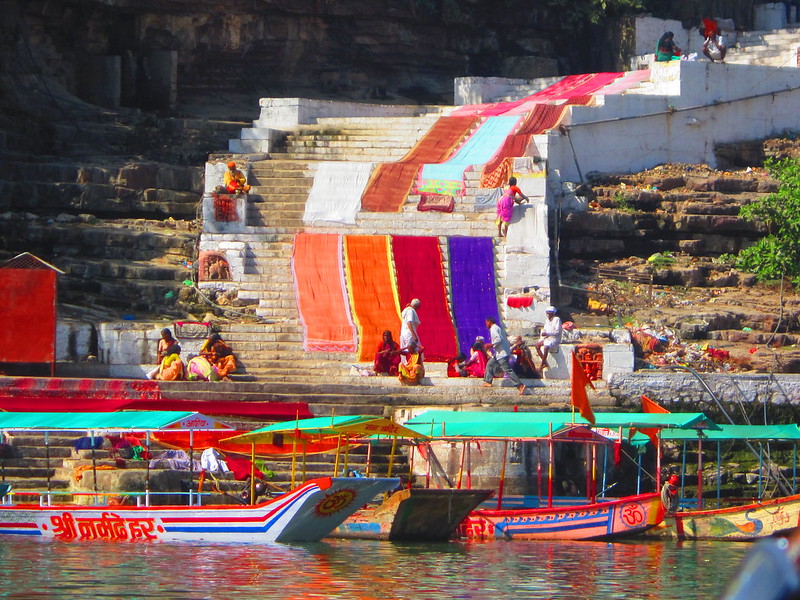
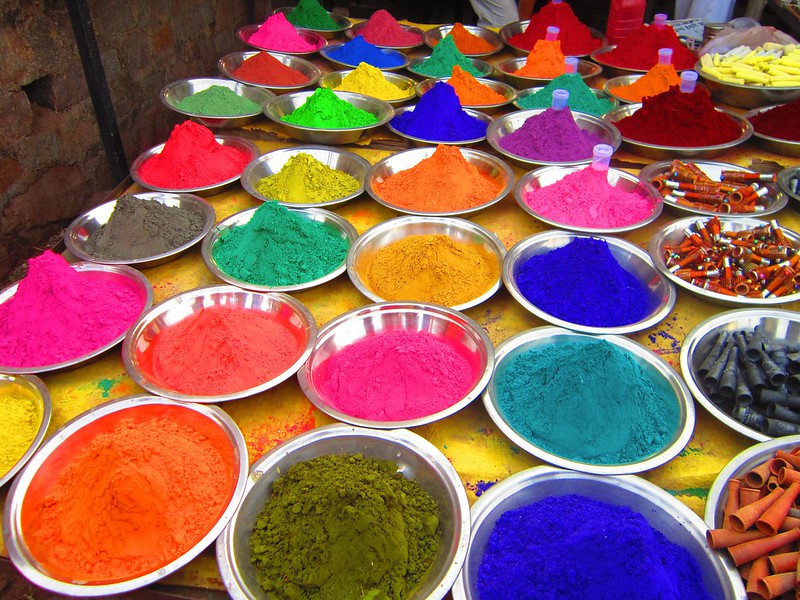
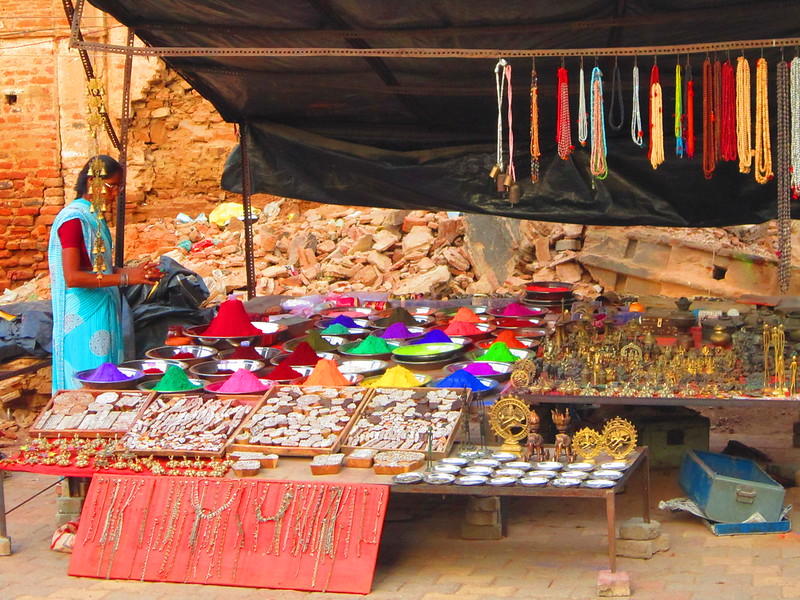

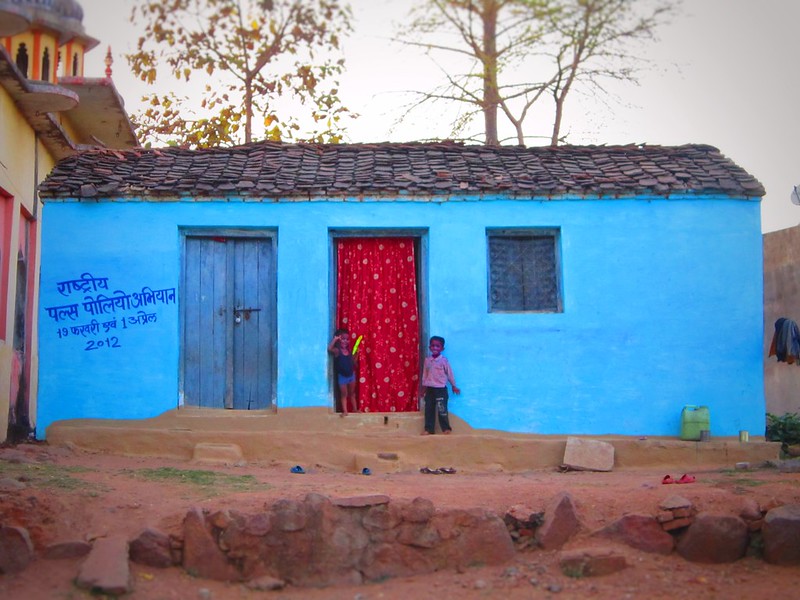
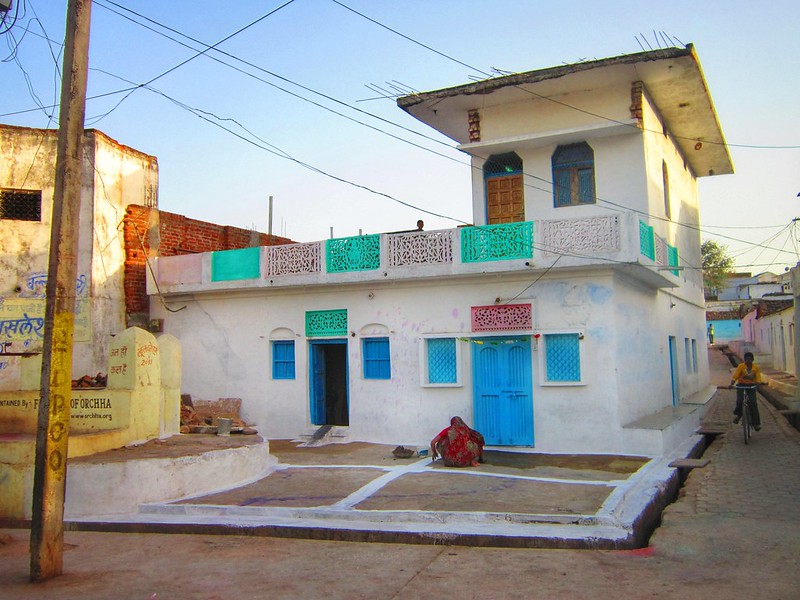



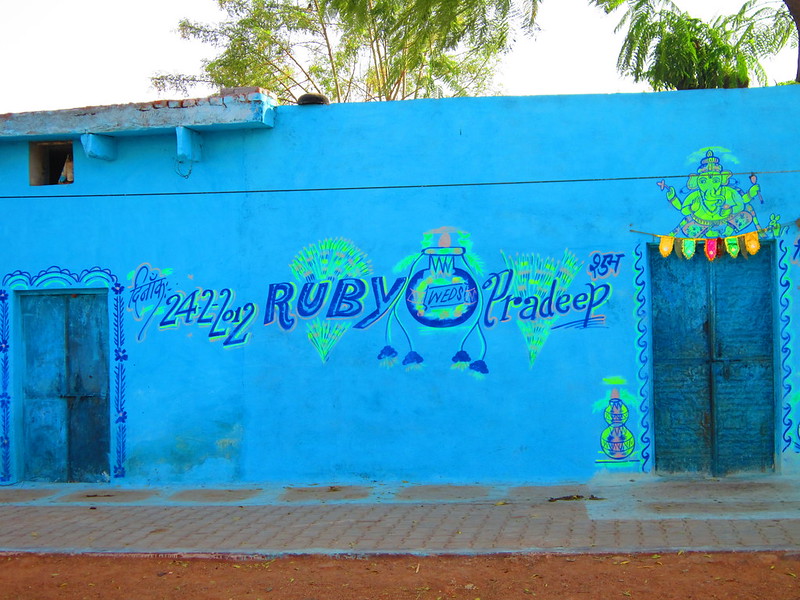
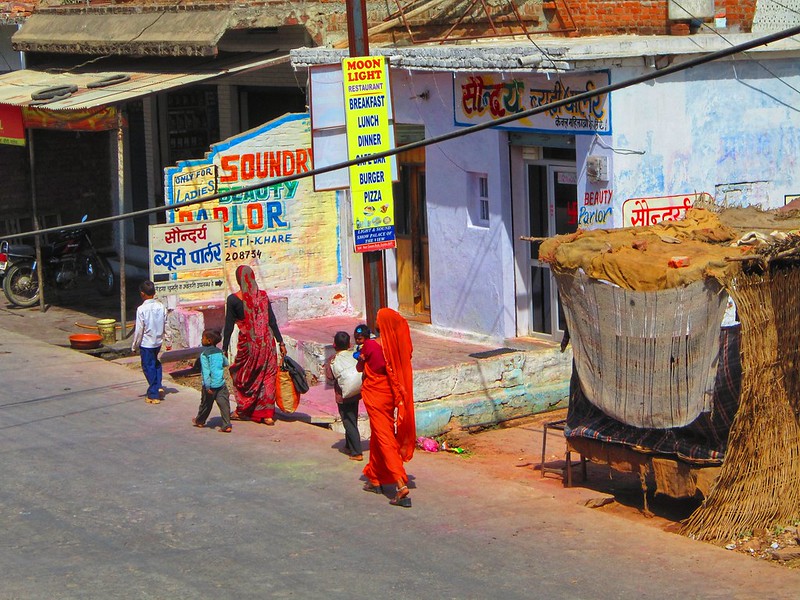
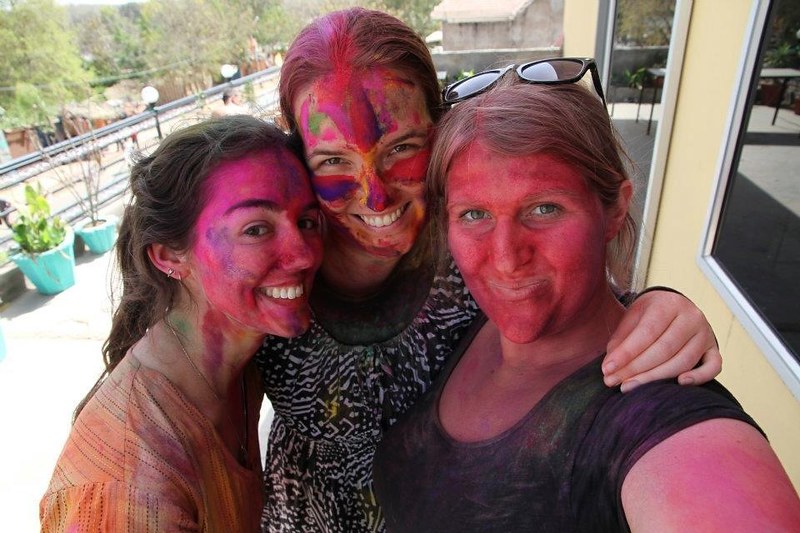


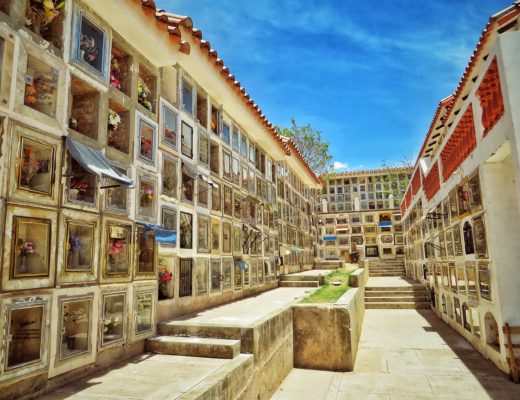
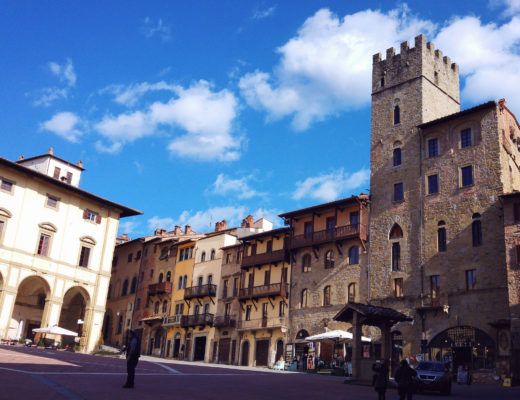
7 Comments
Helen
December 7, 2012 at 11:49 pmLove this photo. This inspires me to visit India during the Holi festival, it must be amazing. x
Flora
December 8, 2012 at 12:51 amExperiencing Holi was one of my favourite things about India – and I almost preferred the after effects of the festival even more! Most locals seem to forget about the colours almost as soon as they’ve stopped throwing them, but they lasted for weeks on buildings, pavements, and animals. I kept seeing stained cows for at least a month all around the country 🙂
Noah
December 8, 2012 at 4:33 pmIt’s safer than cow-tipping. I also went to a Hindu festival in Bali at the end of August and watched a few holy men and a cohort of worshippers try to sacrifice a duck and a chick to the ocean, so it’s also much better than that.
Flora
December 8, 2012 at 8:30 pmThe fact that they tried (and thus presumably failed?) to sacrifice them sounds rather intriguing… And I don’t think anyone in India is going to try cow-tipping without risking extreme bad luck!
Ourjourneytothesea
December 20, 2012 at 7:26 amHehe I love it!
Shailesh Jangra
January 30, 2013 at 8:21 amYou all are most welcomed. If you want to enjoy holi festival then do visit India in month of March . And if you want to see best holi then visit north India specially Uttar-Pardesh (Mathura, Virndavan etc.). These cities belongs to lord Krishna and famous for holi festival.
Ceri
February 19, 2013 at 12:09 amCows = One of my favourite animals. <3 <3 Absolutely love this! 😀